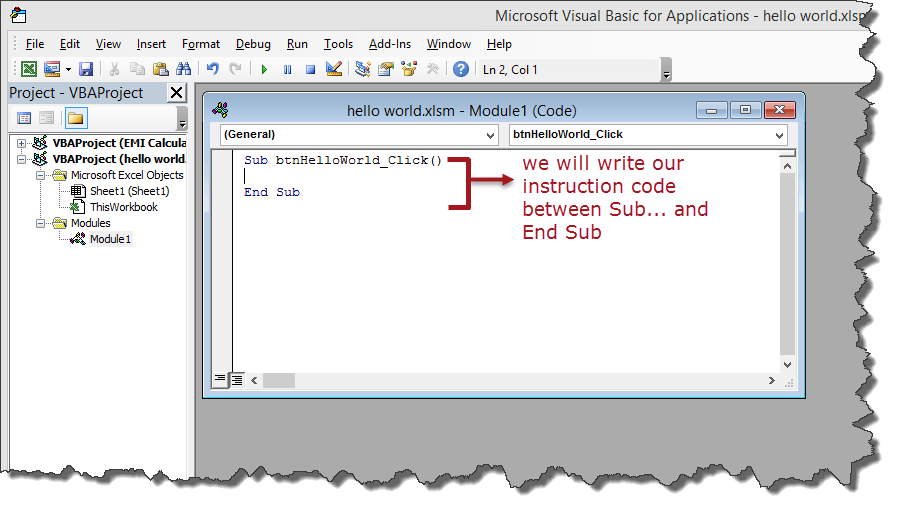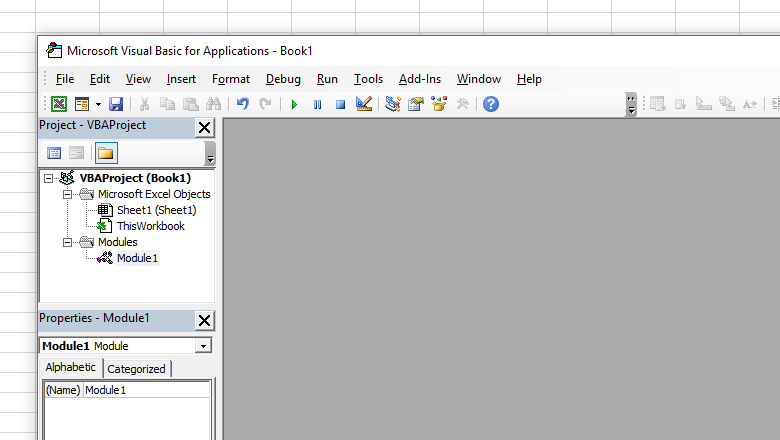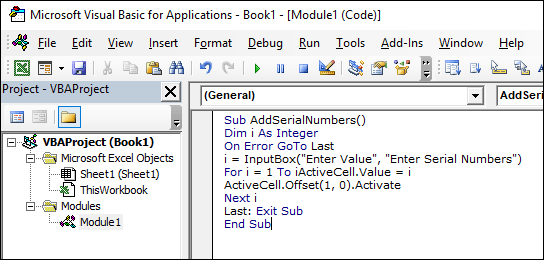- Excel Vba Example
- Visual Basic Code Examples For Excel
- Visual Basic Code Excel Examples Word
- Free Visual Basic Code Examples
- Excel Visual Basic Programming Examples
- Excel Visual Basic Function Example
- Visual Basic Code Excel Examples Python
Chilkat • HOME • Android™ • Classic ASP • C • C++ • C# • Mono C# • .NET Core C# • C# UWP/WinRT • DataFlex • Delphi ActiveX • Delphi DLL • Visual FoxPro • Java • Lianja • MFC • Objective-C • Perl • PHP ActiveX • PHP Extension • PowerBuilder • PowerShell • PureBasic • CkPython • Chilkat2-Python • Ruby • SQL Server • Swift 2 • Swift 3,4,5... • Tcl • Unicode C • Unicode C++ • Visual Basic 6.0 • VB.NET • VB.NET UWP/WinRT • VBScript • Xojo Plugin • Node.js • Excel • Go
VBA (Visual Basic for Applications) is the programming language of Excel and other Office programs. 1 Create a Macro: With Excel VBA you can automate tasks in Excel by writing so called macros. In this chapter, learn how to create a simple macro. 2 MsgBox: The MsgBox is a dialog box in Excel VBA you can use to inform the users of your program. How to write VBA code (Macros) in Excel? To write VBA code in Excel open up the VBA Editor (ALT + F11). Type 'Sub HelloWorld', Press Enter, and you've created a Macro! OR Copy and paste one of the procedures listed on this page into the code window. What is Excel VBA? VBA is the programming language used to automate Excel. Add Serial Numbers. Sub AddSerialNumbers Dim i As Integer On Error GoTo Last i =. Go to your developer tab and click on 'Visual Basic' to open the Visual Basic Editor. On the left side in 'Project Window', right click on the name of your workbook and insert a new module. Just paste your code into the module and close it. Now, go to your developer tab and click on the macro button.
|
© 2000-2020 Chilkat Software, Inc. All Rights Reserved.
What are Macros?
They are a series of commands used to automate a repeated task. This can be run whenever the task must be performed.
How to access Macros
Click on the ‘View’ tab, at the end you’ll find the function ‘Macros’ arranged in the Macros group. Click the arrow under ‘Macros’ where you can manage your macro performances easily.
To edit a macro, click on the ‘Edit’ button, this will take you to the ‘Visual Basic Editor’ where you can easily modify the macro to do what you want.
Visual Basic Editor view:
10 Useful Examples of Macros for Accounting:
1. Macro: Save All
Helpful for saving all open excel workbooks at once. It is advised to run this macro before running other macros or performing tasks that’s could potentially freeze Microsoft Excel.
Name this macro ‘SaveAll’
Example code:
2. Macro: Comments and Highlights
Helpful is you use a lot of comments and highlights while editing worksheets. Running this macro generates a new tab at the front of the worksheet with a listing of every cell with a comment or highlight in the workbook. Each cell reference is a hyperlink that leads directly to the cell with the comment/highlight. The summary tab lists the value within the cell and the text in the comment.
Additionally, there is an ‘Accept’ button that removes the highlight or deletes the comment from the chosen cell. Once all changes are accepted, the summary tab will be deleted.
NB: This macro only sets up to find certain highlights of yellow, but this can be modified.
3. Macro: Insert a Check Mark
Helpful for footing (Adding a column of numbers) trial balances, schedules and reconciliations. It is often common to put a check mark below the total to show the column total is accurate.

This macro will insert a red check mark in the active cell. Once this is added all you will be required to do is select the cell you want to check-mark in and run the macro. Name this macro ‘Checkmark’.
Example code:
4. Macro: Mail Workbook
Excel Vba Example
Helpful to send a lot of excel files via email. Running this macro creates a new Microsoft Outlook email with the last saved version of the open workbook. The email, by default, will not be addressed by anyone, the subject will be the name of the workbook, and the body will be ‘See attached’. However, these settings can be customized.
Example code:

Visual Basic Code Examples For Excel
5. Macro: Copying the Sum of Selected Cells
Helpful in copying the sum of several cell in a spreadsheet. These cells can be scattered throughout the spreadsheet or all in the same row/column.
Once this macro is added you need to highlight the cells you want to sum, then run the macro, and then paste into the cell you want the sum in.
NB: This will just paste the value of the sum, not a sum() formula
Example code:
6. Macro: Open Calculator
Helpful to open a calculator.
Example code:
Sub OpenCalculator() |
7. Macro: Refresh All Pivot Tables
Helpful to refresh all pivot tables in the whole workbook in a single shot.
Example code:
8. Macro: Multiply all the Values by a Number
Helpful if you have a list of numbers you want to have multiplied by a particular number. Select the range of cells you need and run the example code below. It will first ask you for the number with whom you want to multiply and then instantly multiply all the numbers in the range with it.
Example code:
9. Macro: Add a Number to all the Numbers in Range
Similar to multiplying, you can also add a number to all the numbers in a particular range.
Visual Basic Code Excel Examples Word
Example code:
Free Visual Basic Code Examples
10. Macro: Remove Negative Signs

Excel Visual Basic Programming Examples
Code that checks a selection and converts all the negative number into positive. Select a range and run the code.
Excel Visual Basic Function Example

Visual Basic Code Excel Examples Python
Example code: